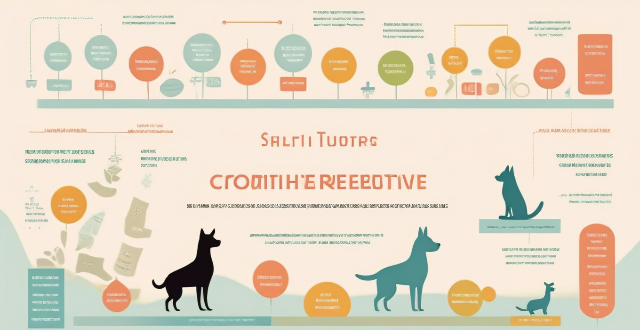This article provides a comprehensive guide on recognizing if your pet is overweight and outlines steps to manage and potentially reverse the issue. It includes visual checks like Body Condition Score (BCS) and waist and rib checks, as well as behavioral cues such as decreased activity level and difficulty in movement. The solutions involve diet management, including consulting a veterinarian, providing a balanced diet with portion control, regular exercise, health monitoring, mental stimulation through puzzle toys and training, and maintaining consistency in care. The text emphasizes the importance of patience, consistency, and adaptability in managing pet weight issues.

Recognizing if Your Pet is Overweight
Visual Checks:
- Body Condition Score (BCS): A simple method to determine your pet's weight status. On a scale of 1-9, with 1 being very underweight and 9 being very overweight, you should aim for a score around 4-5.
- Score 1-3: Underweight
- Score 4-5: Ideal weight
- Score 6-9: Overweight
Physical Examination:
- Waist Check: From above, look down at your pet. There should be a noticeable waist behind the ribs. If this waist is absent or not easily seen, your pet may be overweight.
- Ribs Check: Gently run your hands along your pet’s side. You should feel the ribs but they should not be prominent. If you can’t feel them at all, your pet may be overweight.
Behavioral Cues:
- Activity Level: Decreased activity could indicate weight issues.
- Difficulty in Movement: If your pet struggles to get up or lie down, it might be because of extra weight.
What Can You Do About It?
Diet Management:
- Consult a Veterinarian: Before making any drastic changes to your pet's diet, consult with a veterinarian. They can suggest the right type and amount of food based on your pet's specific needs.
- Balanced Diet: Ensure your pet is getting a balanced diet rich in nutrients but low in calories. Consider switching to a specialized "light" or "low-fat" pet food formulated for weight loss.
- Portion Control: Avoid free-feeding and instead provide measured meals. Use a measuring cup to ensure accuracy.
Exercise Regimen:
- Regular Exercise: Engage your pet in regular physical activities such as walking, running, playing fetch, or swimming. Start slow and gradually increase intensity and duration.
- Playtime: Incorporate more interactive play that encourages movement.
- Consistency: Maintain a consistent exercise schedule to help regulate your pet's metabolism and energy expenditure.
Health Monitoring:
- Regular Check-ups: Visit your veterinarian regularly for weigh-ins and health assessments.
- Adapt as Needed: Be prepared to adjust your pet's diet and exercise plan based on their progress and feedback from your veterinarian.
Mental Stimulation:
- Puzzle Toys: Encourage mental stimulation through puzzle toys that dispense treats to promote problem-solving skills and keep your pet mentally active.
- Training: Practice obedience training or teach new tricks to keep your pet mentally engaged.
By combining a balanced diet with regular exercise and monitoring your pet's health, you can effectively manage and possibly reverse the effects of overweight in pets. Always remember that patience and consistency are key, and every pet's journey toward a healthier weight is unique.